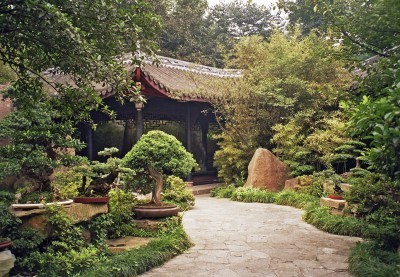






A Chinese garden is a place of beauty, serenity and a spiritual connection with nature that provides busy people with much-needed respite from a noisy, stressful world. It isn’t difficult to understand the ever-increasing interest in this ancient art form. Let’s learn more about how to create a Chinese garden of your own.
Three major elements of a Chinese garden traditionally include:
Architecture such as pavilions and teahouses provide a place for reflection, conversation and refreshments.
Chinese gardens contain a variety of plants chosen to provide beauty for each season. Chinese garden plants may include trees, shrubs, perennials, annuals and aquatic plants. Bonsai plants are also common.
Bamboo is an important plant that symbolizes flexibility. Similarly, pine trees represent endurance and lotus symbolizes purity.
Other plants often found in a typical Chinese garden include:
However, plants are often chosen for their form, balance and texture rather than showy blooms or bright colors. Every plant is carefully chosen for its beauty and meaning.
Creating Chinese gardens isn’t all that difficult to do. Select a space for your Chinese garden, then make a sketch of your plans. Your garden should be compact, asymmetrical and pleasing to the eye.
Clear existing vegetation and create a water feature, such as a pond or stream, which is often the focal point of a Chinese garden. Plant a stand of bamboo, but be sure to steer clear of invasive varieties, which can overtake your carefully planned Chinese garden. Select other plants that will provide color and texture for each season.
Other features may include shapes that refer to elements in nature, such as a curved walkway. If possible, provide an architectural element such as an artificial mountain with a pavilion. Many Chinese gardens are enclosed by walls.
Japanese gardens were initially influenced by Chinese gardens and both are peaceful, tranquil places to connect with nature. However, the two styles have several differences.
Garden Design Ideas for Small Gardens
Tips For Creating a Beautiful Butterfly Garden
Suggestions for a Small Garden Landscape Design
3 Quick Tips for Creating a Garden Hideaway
Cat-Friendly Garden Ideas: Tips For Creating A Cat-Friendly Garden
Weed Gardens For Wildlife: Creating A Weed Garden Bed
Color Schemes For Gardens: Creating A Monochromatic Color Garden
Copyright © www.100flowers.win Botanic Garden All Rights Reserved